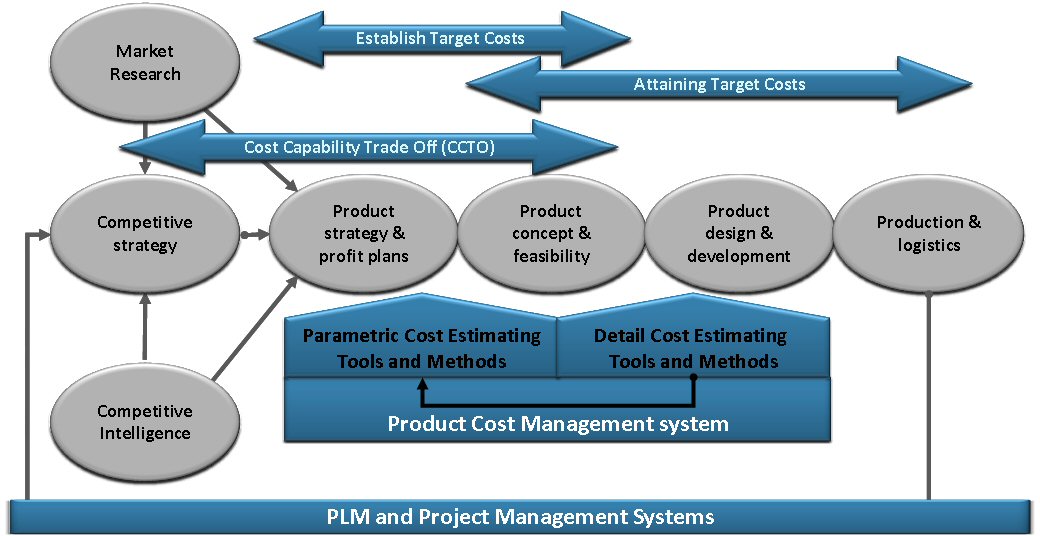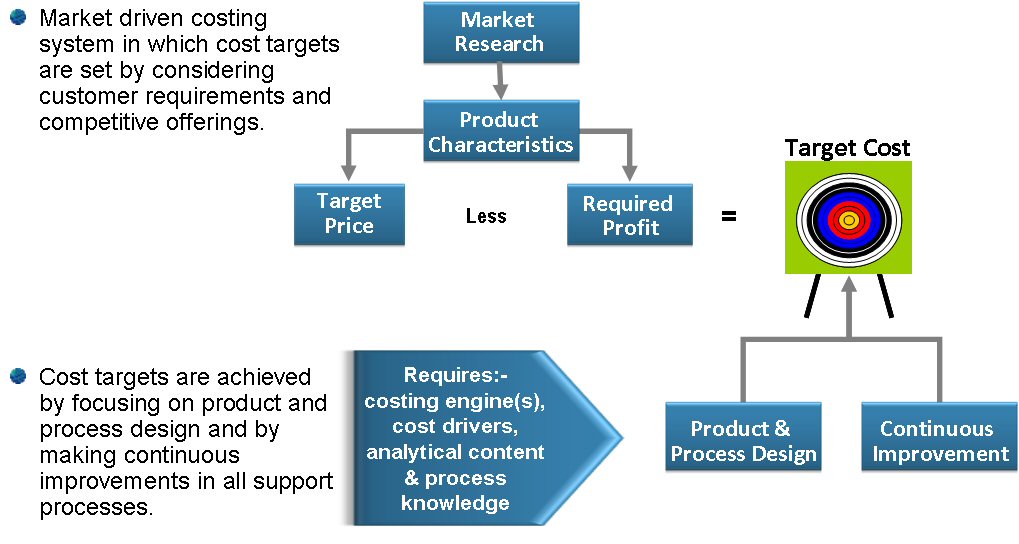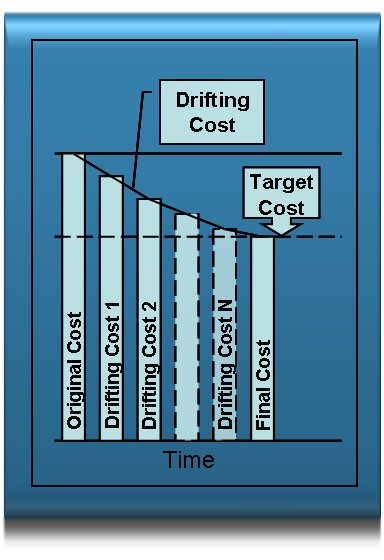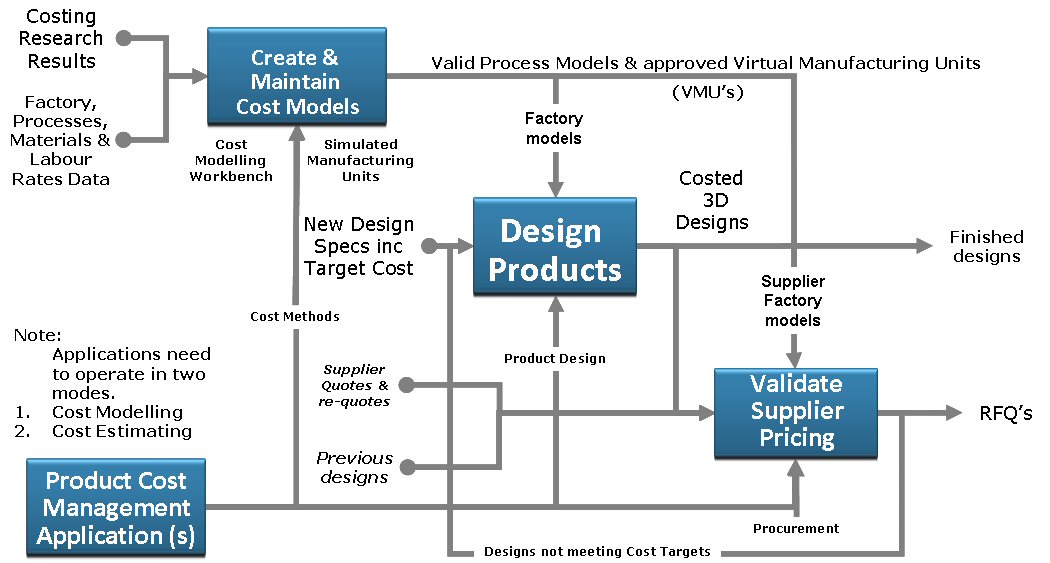8.05 - Product Cost Management
Overview
Product Cost Management (PCM) is a methodology for managing product cost to a commercially desired target. It is also known as Target Costing or, in government and defence circles, as Cost as an Independent Variable (CAIV). It is a more sophisticated version of Design to Target Cost (DTC). The object of PCM systems is to support the management of driving cost down while design is in progress. Rather than launching a product that is technically capable and then doing cost reduction exercises after the launch event the cost elements are considered at first design pass.
The Overall Methodology
The overall approach is to set a Target Cost based on commercial or marketing requirements based on the value the expected end user puts on the technical capability of the product. The company then decides what profit margin it requires to sustain business growth. The company or product design team then gears up and executes a product development project with clearly defined technical, quality and cost aims. The process can by illustrated by this diagram adapted from “Target Costing” published by CAM-I.

The front end processes of market research and the gathering of competitive intelligence provide the input to develop the competitive strategy. This gives way to a product strategy that includes individual products (or product ranges) with desired profit plans. As early as is possible a product breakdown structure (PBS) is built - usually using a bill of materials (BOM) processor. Project plans are derived from the PBS or BOM as a Work Breakdown Structure (WBS). The BOM or PBS says what is to be delivered and the WBS says how and when it will be accomplished.
The Cost Estimating role in Product Cost Management
Cost estimating provides a very important role in this process in two important ways:-
- Establishing Target Costs at the beginning of the process
- Confirming attainment of Target Costs towards the end of the process.
The techniques used in these stages are discussed in section 8.04.
The IT architecture to support Product Cost Management
A simultaneous or concurrent engineering environment is required to accomplish the aims described. Some companies have adapted their Product Life-cycle Management Systems (PLM) to accommodate the additional cost estimating and product cost management requirements. The areas of adaptation include the provision and integration of the following:-
- Cost Estimating tools
- Materials Selection tools
- Process Analysis and Selection tools
- Consolidated materials cost comparison databases to provide consistent input to process planning and design analysis tools
- Design For Manufacture Tools
- Quality assurance tools described in section 5.00 of this guide.
These tools enable the attention to detail required to adopt a successful Product Cost Management strategy. The Bill of Material systems provides the cost “roll-up” capability to see the accumulative cost effect of the design efforts.
Setting the Target and Managing Cost

Strategic Capabilities of Product Cost Management
The major strategic capability is Target Costing or Design to Target Cost as described previously by managing the Drifting Cost until the Target Cost is attained.

In addition PCM systems can enable:-
- Analysis of supplier costs to validate RFQ responses from suppliers
- Also known as “Should Cost”
- Analysis of competitor business financials, processes, product cost structures and
cost drivers
- Also known as business benchmarking & product tear down
Other Capabilities of Product Cost Management
Another area of concern for the cost conscious company is “Cost Creep.” Without adequate control product costs gradually creep upwards because of economic and engineering specification changes via engineering change orders. With Product Cost Management system it is possible to monitor these small delta increases and determine if the suppliers requests for an increase is justifiable. The traditional way to attack these issues is via a periodic “blitz” programmes for:-
- Supplier consolidation
- Part rationalisation
- Variety reduction
- Design cost reduction exercises such as Value Analysis (VA)
Product Cost Management systems enable the continuous monitoring of product costs to validate:-
- Actual cost of “cost reduction” engineering changes
- Cost of proposed product design “improvements”
- Engineering change requests for process change
- Basis of supplier requests for upward price changes
Product Cost Management – Simplified Process

Summary of PCM benefits when used with other techniques
The control and management of Component Variety can be supported with Product Cost Management systems that incorporate part classification capabilities to manage items at the commodity group level.
That in turn provides data for the parametric Cost Estimating Relationships (CER) for that part class or commodity group.